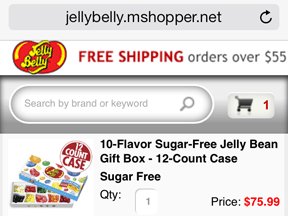Ecommerce marketers are quickly learning how consumers use different devices and when they use them. Marketers know that different age groups and demographics use them differently. City dwellers have different patterns than suburban or rural dwellers. Each use Facebook for different reasons than Pinterest or Twitter. Fifty-year-old shoppers may be more likely to watch television on a Thursday night than 22-year olds.
I recently reviewed recent mobile trends leading up to this holiday season with a senior product director with Akamai, a leading content delivery network. Its data presents clear patterns for online access on different types of devices on a daily basis. Akamai’s data shows that consumers access the Internet much more on mobile devices from Friday morning through Sunday evening. During the week, consumers mainly use desktop devices, according to Akamai.
Other studies indicate that there is a trend within this same pattern of people heavily using smartphones — rather than desktops — starting in the late afternoon during weekdays. Consumers then switch to tablets sometime later in the evening, frequently while watching television. Those of us in ecommerce know that evenings are frequently a heavy shopping period.
In other words, there are opportunities to optimize your marketing and merchandising activities by device and by day and time.
Marketing Tactics During the Day
- Workday. During the day, when most people are working on their desktops and laptops, consider delivering email promotions and advertising that targets these devices. Use larger images. For advertising, target sites where workers are most likely to see your ads as they work.
Consider remarketing ad networks on news sites and large portals like Yahoo, or other venues your target consumer may be viewing through the day.
- Late afternoon and early evening. During the late afternoon, utilize smartphone friendly emails and landing pages. Consumers are socializing, and preparing or eating dinner. They are likely accessing the Internet on their smartphone. In urban areas, many are commuting, but still engaging in email activities from the workday.
Engage your shoppers and provide them with a path and reason to purchase later in the evening when they sit down with their tablet and focus on things other than their commutes and dinner. Consider scheduling ads for smartphones and tablet devices. Consider, too, SMS marketing during this time. Mobile and SMS ads are proving to be highly effective tactics that lead to purchases.
- Late evening. In the late evening, consider promotions in your online store that will likely to lead to conversions. Make sure your ecommerce site is mobile optimized.
Daily or Weekly Tactics
Consumers have much more time to research products and shop in the evenings and weekends. Most ecommerce merchants I know see a large volume of orders late in the weekend and early on Monday morning. Time your marketing activities accordingly. Friday afternoons and evenings may seem like a poor time to send an email, but in my previous online jewelry business, we experienced very good results from Friday afternoon promotions. Frequently, the sales from our most loyal customers.
When using social media, time your posts when consumers are likely shopping online – in the evening and weekends. Monitor Twitter and Facebook and be responsive to your Fans and followers.
If you use pay-per-click advertising, use time-of-day settings for your ads. Consider, also, geographical targeting.
Seasonal Tactics
Be aware of what your competitors and influencers are up to. Online promotional activities start earlier for seasonal events every year, seemingly. Don’t want to start the party to early, but don’t join in late after your target consumers have already made purchases.
For social media, start your promotional messaging early. This provides an opportunity to receive feedback. You may then have a better idea of when your consumers are ready to start shopping.
Know Your Customers
Know your customers and prospects and how they most likely align to these types of timing questions. Different demographics have different behaviors. Use your own analytics to look for trends in devices and visits to your store. Experiment with different tactics.




